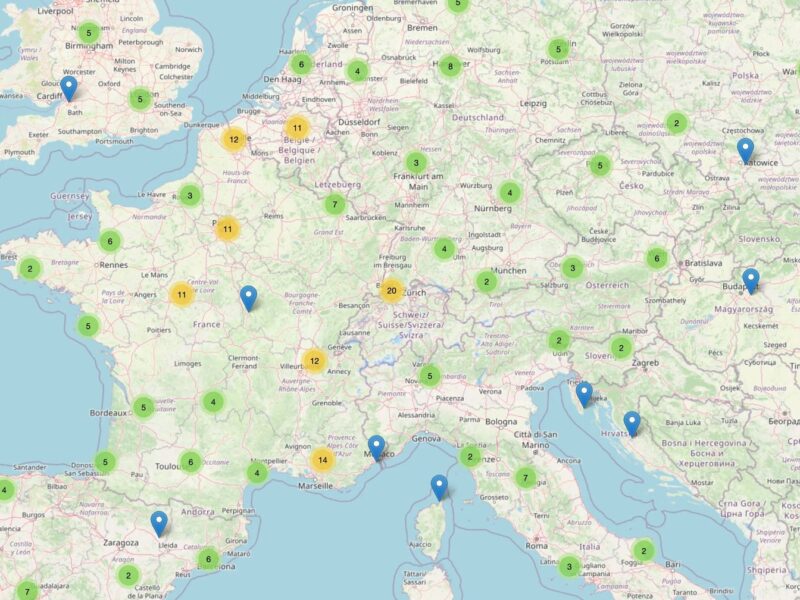Web services play a pivotal role in today’s digital landscape, allowing heterogeneous software systems to communicate and share data seamlessly. These services leverage standard communication protocols, making it easier for applications developed in different programming languages and environments to interact. Understanding how web services operate and their different types can significantly enhance the way developers build and integrate applications.
What are web services?
Web services are detailed frameworks designed for communication between applications over the internet. They employ standardized messaging protocols that facilitate interaction not only between different web-based applications but also across varied platforms and programming languages.
The purpose of web services
The main goal of web services is to enable smooth interactions between clients and multiple web applications. By providing a formal structure for describing how to interact with a service, they simplify data access and enhance transactional activities. This leads to improved efficiency in data exchanges and operations between organizations and their systems.
Types of web services
Understanding the different types of web services is crucial for grasping their functions and applications.
XML-based services
At the core of many web services is XML. This markup language is fundamental for structuring data exchange, enabling the following:
- XML-RPC: A simplistic protocol utilizing HTTP for remotely calling methods and retrieving data.
SOAP and REST protocols
Two primary protocols for web services are SOAP and REST. Both have unique features that cater to different needs:
- SOAP: A protocol emphasizing structured communication through XML for message formatting, supporting complex operations and enterprise level applications.
- REST: An architectural style that uses HTTP requests to manipulate data, known for its simplicity and flexibility in web service design.
Service descriptions and discoverability
Effective operation and adaptability of web services rely on how they are described and discovered:
- WSDL: This is the language used to describe the functionality of web services and how clients can interact with them.
- UDDI: It serves as a directory for web services, allowing their discoverability through an XML-based standard.
Operational mechanism of web services
Web services function based on a client-server model, leveraging APIs for interaction. Here’s a breakdown of their operational mechanism:
- Client requests: The client initiates a request to the server in a structured format, often JSON or XML.
- Server processing: Upon receiving the request, the server processes and authenticates it, retrieving the necessary data from its database.
- Response delivery: Finally, the server sends the processed results back to the client, which presents them appropriately.
Characteristics of web services
Several defining characteristics distinguish web services from other types of integrations:
- Accessibility: Available over widely-used web protocols, making them platform-independent.
- Modularity: Capable of operating independently or in tandem with other services.
- Open standards: Aligning with common standards fosters interoperability among diverse software systems.
- Discoverability: Services registered in directories like UDDI are easy to locate and utilize.
- Loose coupling: This enhances agility and flexibility within service interactions.
Uses of web services
Web services are utilized in various contexts, including:
- Reusable code: They enable the development of modular components applicable across different applications.
- Delivery of services: Providing on-demand computing resources and data as business services.
- System integration: Bridging modern web services with legacy systems for smoother transitions and updates.
Advantages of web services
Implementing web services offers numerous benefits:
- Simplicity: Standardized protocols make the integration process more straightforward.
- Interoperability: They allow seamless interactions across various systems.
- Cost-effectiveness: The reduced need for maintaining numerous systems lowers operational costs.
- Modularity: This promotes the creation of reusable code components.
- Security: Enhanced encryption and authentication measures protect data during transfers.
Challenges in implementing web services
Despite their advantages, challenges exist in the realm of web services:
- Network reliability: Dependence on connectivity introduces potential vulnerabilities.
- Performance overhead: Increased complexity can slow response times.
- Security risks: Unsecured web services may be vulnerable to attacks if not properly safeguarded.
- Troubleshooting complexities: Identifying issues can be difficult due to numerous interacting components.
- Vendor lock-in: Relying heavily on third-party providers may restrict flexibility in service use.
Comparing SOAP and REST
Choosing between SOAP and REST entails understanding their distinct operational methodologies:
- SOAP: Recognized for its complexity and stateful nature, it is rich in capabilities—ideal for intricate applications.
- REST: Its simpler, stateless approach offers greater adaptability for web services despite lesser strict standards.
Distinctions between APIs and web services
It’s important to differentiate between APIs and web services:
- Web services: Generally heavier with reliance on network connectivity, utilizing open protocols.
- APIs: More lightweight and capable of functioning independently, though every web service serves as an API.

